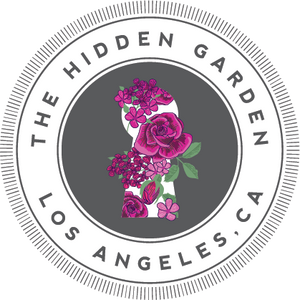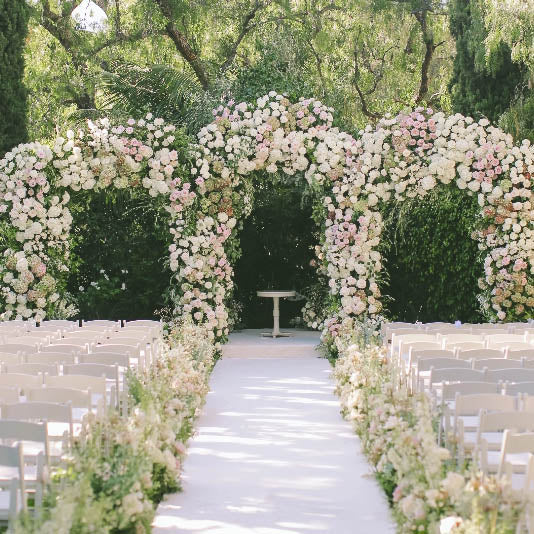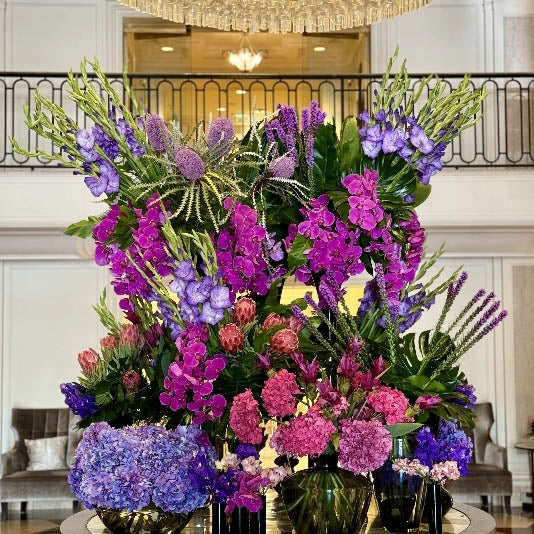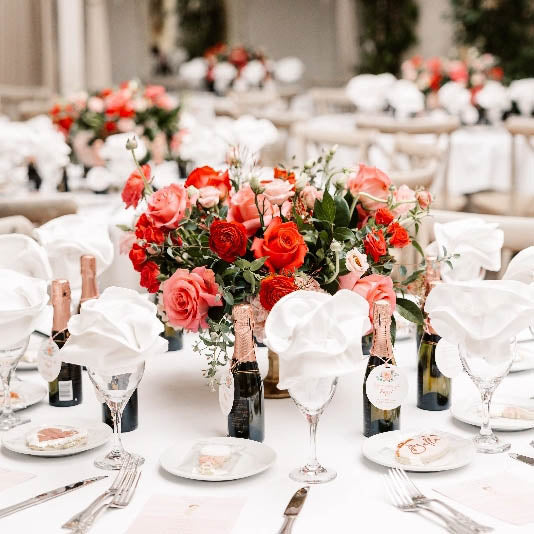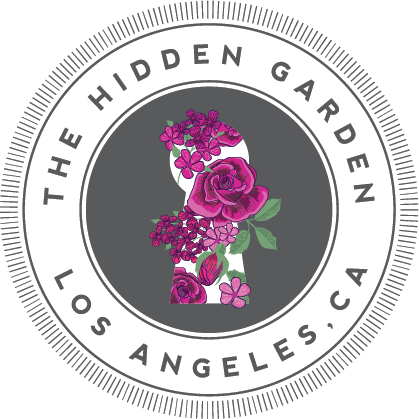
I've been arranging flowers in Los Angeles for over two decades, and nothing makes me smile quite like seeing those first golden poppies bloom across our hillsides each spring. The California state flower is the Golden Poppy (Eschscholzia californica) and has been since 1903. This cheerful orange bloom captures everything I love about California.
In this article we deep dive into the California Poppy’s history, symbolism, and answer all questions you have about this iconic bloom.
What Is the California State Flower?
Scientific Name & Classification
The California poppy belongs to the Papaveraceae family, which is the poppy family for those who didn't major in botany! Its scientific name, Eschscholzia californica, honors Johann Friedrich von Eschscholtz, a Russian botanist who first documented it during an expedition to California in the early 1800s.
Here's what makes this flower special from a botanical perspective:
-
Four silky petals that close at night
-
Self-seeding annual that acts like a perennial
-
Produces a long taproot for water access
-
Seeds can remain viable in soil for years
I love explaining to my clients that despite sharing a family with opium poppies, our California variety contains no narcotic properties. You can admire them all you want with no drowsy side effects included!
Why It Was Chosen in 1903
Picture lawmakers in Sacramento over a century ago, debating which flower best represented our Golden State. The California poppy had already won hearts in an 1890 vote by the California State Floral Society. By the time April 1903 rolled around, the state legislature made it official. According to the California State Library's symbols page, they even designated April 6th as California Poppy Day, though I'll bet most Californians don't know we have our own flower holiday!
The choice made perfect sense. These golden blooms covered our hills during the Gold Rush era, earning California various colorful nicknames from early explorers. The flower embodied our state's golden promise and wild beauty. Today, I still get requests from couples wanting to incorporate native poppies into their wedding designs because they represent home.
Symbolism & Folklore of the Golden Poppy
A Cultural Icon of California
Every spring when poppy season hits, my phone rings off the hook. Brides want them in bouquets. Event planners dream of poppy-themed installations. The connection runs deep because these flowers symbolize our Gold Rush heritage and that pioneering California spirit.
I recently designed arrangements for a tech company's launch party where they specifically requested California poppies to represent innovation and growth. While I couldn't use wild poppies (they wilt immediately when cut), I created stunning silk replicas mixed with other native blooms. The golden poppy has become more than just a flower. It's a symbol of California dreaming, resilience, and natural abundance.
Spanish & Indigenous Perspectives
The Spanish called them "Dormidera," meaning the drowsy one, because the petals close at night. Other names included "Copa de Oro" (Cup of Gold), perfectly describing those golden chalice-shaped blooms. Early Spanish explorers documented seeing vast expanses of these flowers from their ships.
Indigenous peoples of California have their own relationships with these flowers. Different tribes incorporated the flowers into their traditions and stories, recognizing the special nature of these blooms long before California became a state. These cultural connections run deep throughout California's native communities.
How & Where California Poppies Grow
Growing Conditions
Want to grow your own patch of California gold? These beauties practically grow themselves if you give them the right start. They thrive in poor, well-draining soil. Seriously, the worse your soil, the better they bloom! Full sun is non-negotiable though. These flowers need at least six hours of direct sunlight daily.
For best results, scatter seeds in fall right before the rains start. Don't bury them because these seeds need light to germinate. Just press them gently into the soil surface. They're incredibly drought-tolerant once established, surviving on rainfall alone in most California locations. The UC Master Gardener Program confirms they grow successfully in USDA zones 7-10.
I've found they self-sow enthusiastically. Plant them once, and you'll have volunteers popping up for years. The trick is letting the seed pods fully ripen and scatter naturally. Those little torpedo-shaped pods split open when ready, dispersing seeds several feet away!
Bloom Season
Our poppies typically bloom from February through September, though peak season varies by location. Coastal areas see blooms starting in February, while inland valleys might not see their first flowers until March or April.
Here's my regional bloom guide based on years of poppy-chasing:
-
Northern California coast: March to June
-
Southern California coast: February to May
-
Central Valley: March to May
-
Desert regions: February to April (shorter season due to heat)
-
Mountain areas: May to August
Rainfall makes all the difference. After a wet winter, you'll see what we call a "super bloom," those years when entire valleys turn orange. I remember the 2019 super bloom when clients were booking flower tours instead of flower arrangements!
Pollinators & Wildlife
California poppies support an amazing variety of local pollinators. I often spot native bees, especially sweat bees and bumblebees, diving headfirst into the blooms. Beetles love them too, spending hours rolling around in the pollen like tiny golden puppies.
Hover flies and bee flies visit regularly, while painted lady butterflies use them as nectar sources during migration. The Xerces Society's pollinator plant list notes that poppies are especially valuable for specialist native bees that have evolved alongside these flowers. Moths visit the flowers at dusk, just before the petals close for the night. Even birds benefit when finches eat the seeds from dried pods in my garden.
Where to See California Poppies in Bloom
Iconic Wildflower Spots
Living in Los Angeles puts us within easy driving distance of some spectacular poppy displays. The Antelope Valley California Poppy Reserve in Lancaster is just 90 minutes north. When conditions are right, you'll see miles of solid orange blooms. I take my team there every spring for inspiration.
Walker Canyon near Lake Elsinore offers incredible displays, though it gets crowded on weekends. For a quieter experience, try Figueroa Mountain near Santa Barbara or the Gorman Hills along Interstate 5. The California Department of Parks and Recreation maintains updated bloom reports for state parks during wildflower season.
Each location has its own personality. Lancaster offers pure poppy fields, while coastal spots mix poppies with lupines and other natives. Check out more about California's summer flowers including late-season poppy varieties that extend the bloom time.
Bloom Etiquette & Conservation
Before you head out poppy-peeping, let me share some ground rules I always tell my clients:
-
Stay on designated trails because those Instagram shots aren't worth destroying habitat
-
Never pick the flowers on public lands
-
Don't lie down in poppy fields for photos since you'll crush dozens of plants
-
Keep dogs leashed and on trails
-
Pack out all trash, including organic waste
-
Visit during weekdays if possible to reduce crowding
-
Support conservation efforts through park entrance fees
I've seen beautiful hillsides damaged by people trying to get the perfect selfie. Remember, these are living ecosystems, not photo studios. The flowers you trample today won't bloom next year.
Can You Pick the California State Flower?
Let's clear this up once and for all. Picking California poppies isn't automatically illegal statewide! This myth has been around forever. The truth is more nuanced. On your own property? Pick away. On state parks, roadsides, or protected lands? That's prohibited and can result in fines according to California Penal Code Section 384a.
Private property follows different rules. You need the owner's permission, obviously. But even in your own yard, consider letting some flowers go to seed. Those seeds ensure next year's display. I grow poppies in my demonstration garden at The Hidden Garden specifically so clients can see them up close, since wild ones can't be used in arrangements.
California Poppies in Floral Design
While wild poppies won't work in cut arrangements (they wilt within hours), there are gorgeous ways to incorporate their beauty into your landscape and events. I've created meadow strips along driveways using poppy seeds mixed with other native annuals. The effect is stunning and requires almost zero maintenance once established.
For container gardens, pair poppies with California native bunch grasses and lavender. The combination looks effortlessly elegant and thrives on neglect, which is my favorite type of garden! I've also used high-quality silk poppies in wedding work when couples want that golden California look.
Speaking of weddings, golden poppies have become increasingly popular in California ceremony designs. Couples love incorporating our state flower through artwork, invitations, and decorative elements. I've created entire wedding themes around the California poppy palette using those warm oranges and golds paired with sage greens and sky blues. As a Los Angeles wedding florist, I help couples celebrate their California roots through thoughtful native flower choices, even when we can't use the actual wild blooms.
Conservation, Sustainability & Climate Lessons
Our state flower teaches us valuable lessons about thriving in California's challenging climate. These poppies evolved to handle drought, poor soil, and temperature swings, exactly the conditions we're facing more frequently. They've shown me how beauty doesn't require excess water or fertilizer.
At The Hidden Garden, I apply these lessons daily. We prioritize drought-tolerant designs and educate clients about sustainable choices. The California poppy proves that working with nature, rather than against it, creates the most stunning and resilient results. This little flower embodies the future of California gardening: tough, beautiful, and perfectly adapted to our Mediterranean climate.
Final Thoughts from a Los Angeles Florist
After all these years working with flowers, the California poppy still stops me in my tracks. Maybe it's the way entire hillsides transform overnight from green to gold. Or how these flowers bounce back after fires, often blooming more vibrantly than before. They remind me why I fell in love with California and why I chose to build my business here.
Next time you spot California poppies, take a moment to really see them. Notice how the petals catch sunlight like stained glass. Watch the bees tumbling through the pollen. These aren't just pretty flowers; they're part of our California story. Visit us at The Hidden Garden to explore more seasonal inspiration and discover how native beauty can transform your own space. Being a trusted florist in LA, I'm always excited to share the magic of California's botanical treasures with you.
